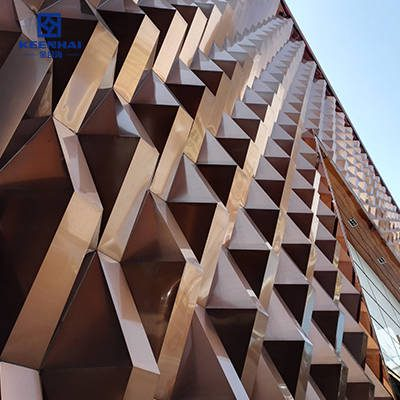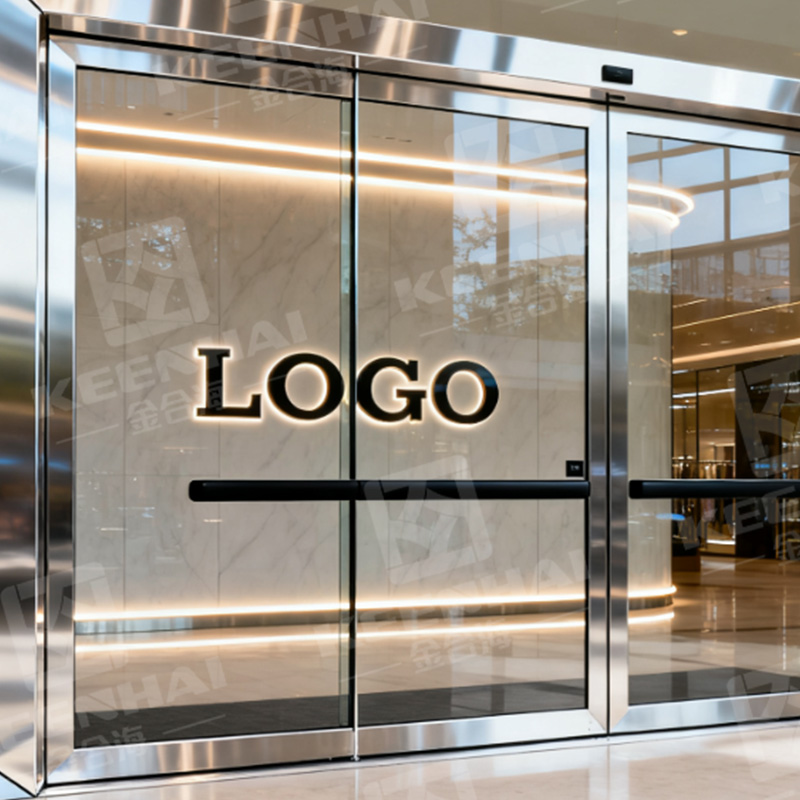Stainless steel and Inox are essentially the same material, with Inox being the European term. The real difference comes from grade and composition, not the name. Choosing the right alloy, like stainless steel sheets, matters more than terminology, ensuring durability, corrosion resistance, and suitability for your project.
1. Understanding the Terms
1.1 What Does “Inox” Mean?
The word Inox comes from the French inoxydable, meaning “non-oxidizing.” In practical terms, it refers to the same alloy family we usually call stainless steel. The idea behind the name is simple: this metal resists rust and corrosion in everyday use. Walk through a modern airport terminal or a high-end shopping mall and you’ll often see elevator panels, railing systems, or wall claddings described as “inox.” The term may sound different, but it points to the same durable alloy used in stainless steel sheets that architects and builders rely on for clean finishes and long-lasting performance.
1.2 Is Inox the Same as Stainless Steel?
Yes, Inox and stainless steel are essentially the same material, just expressed in different languages and markets. The difference lies more in branding than in chemistry. For example, a stainless steel metal plate you see specified in an American construction project would be described as inox plate in European documents, but the composition—an iron alloy with chromium for corrosion resistance—remains the same.
To illustrate, here’s a quick comparison:
| Term | Region of Use | Typical Example in Construction |
|---|---|---|
| Keluli Tahan Karat | US, UK, Asia | Structural beams, kitchen equipment, cladding panels |
| Inox | Europe, Latin America | Elevator doors, facade systems, railings |
Both terms represent the same family of materials, but the context changes depending on where you work or source materials.
1.3 Regional Usage of the Terms
The terminology you encounter often depends on where the project is located. In North America, engineers and builders almost always say stainless steel. Head to Spain, Italy, or Brazil, and the same alloy is universally called inox. This difference in language can create confusion, especially in international projects.
For instance, when a developer in Madrid specified inox panels for a new hotel facade, the contractor sourced them from an Asian supplier, who described the shipment as “stainless steel exterior wall cladding.” The wording was different, but the material matched perfectly. Knowing these nuances helps avoid misunderstandings, especially when importing materials across borders.

2. Material Composition and Properties
2.1 Alloy Elements in Stainless Steel
When people talk about stainless steel, what they’re really describing is a family of alloys built on iron but enhanced with other elements. The most critical one is chromium. Without it, the steel behaves just like any other carbon steel, vulnerable to rust. Add at least 10.5% chromium, though, and the surface begins to form a thin, invisible layer of chromium oxide. That layer is self-healing: scratch the surface and oxygen from the air reacts instantly, restoring the protective barrier. This single addition is why stainless steel stands apart from mild steel.
Beyond chromium, nickel plays a huge role. It stabilizes the microstructure and makes the alloy tougher, especially at extreme temperatures. That’s why kitchens in luxury hotels or industrial food plants often rely on high-quality stainless steel sheets for surfaces that take abuse every day but still resist cracking and corrosion. Molybdenum is another element worth noting, especially in coastal architecture. A facade system exposed to salty air benefits from molybdenum, which dramatically improves pitting resistance.
If you break it down further, manganese can partially replace nickel in certain grades to cut costs, while titanium or niobium may be added in high-performance alloys to prevent carbide precipitation during welding. Engineers specifying materials for bridges or cladding on office towers care about these details because the right balance of elements determines whether the installation lasts ten years or fifty.
2.2 Corrosion Resistance Levels
Corrosion resistance is often the number one reason stainless steel—or inox—is specified in a project. But not all grades perform the same. A sheet of 304 stainless steel used in an indoor escalator panel won’t necessarily hold up on the seafront of Miami. The difference lies in the alloying elements and how much protection they offer against aggressive environments.
For example, 316 stainless steel contains molybdenum, which makes it better suited for coastal applications. That’s why marinas, beachfront hotels, and ocean-view condominiums often opt for this grade in handrails, balustrades, or cladding. In contrast, 430 stainless steel, which is ferritic and has no nickel, offers decent resistance for decorative indoor panels but would fail quickly in salt-rich environments.
Here’s a quick comparison to illustrate the performance gap:
| Grade | Chromium % | Nickel % | Molybdenum % | Common Use Cases |
|---|---|---|---|---|
| 304 | ~18 | ~8 | 0 | Kitchen equipment, interior wall panels |
| 316 | ~16 | ~10 | 2–3 | Coastal facades, marine handrails, chemical plants |
| 430 | ~17 | 0 | 0 | Decorative cladding, appliance panels |
A project manager choosing between these grades has to weigh cost versus performance. For a budget shopping mall interior, 430 might work. For an office tower with an exterior curtain wall system exposed to acid rain, only 316 makes sense. This is why specifications often include not just the alloy but the exact grade, thickness, and finish.
2.3 Mechanical Strength and Durability
While corrosion resistance gets most of the attention, the mechanical properties of stainless steel are just as critical. A sheet or plate has to hold its shape, withstand impact, and resist deformation under load. That’s why engineers look at yield strength, tensile strength, and hardness before approving a material.
Take a stainless steel metal plate used for flooring in an industrial plant. It isn’t just about resisting spills or chemical exposure—it needs to carry forklift traffic, support heavy pallets, and stay flat over decades of use. For this, designers often go for thicker gauges with a raised tread finish, giving both strength and slip resistance.
In architectural settings, durability often plays out differently. A facade system for a skyscraper might use thinner stainless steel panels, but the alloy is chosen to endure constant wind pressure and thermal cycling from summer heat to winter frost. Here, ductility matters more than sheer strength: the panels must flex slightly without cracking.
Real-world examples make this clear. The stainless steel cladding on the Petronas Towers in Kuala Lumpur, for instance, had to balance light weight for installation with enough durability to survive tropical storms and decades of UV exposure. Mechanical properties weren’t just numbers in a datasheet—they determined whether the design vision could last for generations.

3. Applications and Use Cases
3.1 Household and Kitchenware
In homes and restaurants, stainless steel sheets are everywhere, even if most people don’t notice them. Kitchen countertops clad in brushed stainless not only look sleek but also survive years of chopping, spills, and heat from pots. Unlike wood or laminate, they don’t warp when exposed to steam or hot pans. That’s why open-kitchen restaurants lean heavily on this material—it keeps surfaces sanitary and professional-looking even after a rush of dinner service.
Cookware is another everyday application. A pan made from stainless steel may cost more than an aluminum one, but it delivers heat distribution that chefs swear by. It also avoids the reactivity issues seen with copper. For busy kitchens, that reliability translates into fewer replacements and consistent performance.
In residential bathrooms, the same alloy shows up as sinks, taps, and even shower panels. Families appreciate the easy cleaning, while designers enjoy the modern, reflective look. You’ll often find interior decorators specifying stainless steel accents to balance natural stone or wood finishes, blending warmth with a crisp, industrial edge.
3.2 Construction and Architecture
Walk through a modern city and you’ll spot stainless steel almost instantly. Skyscrapers clad in reflective facades, subway stations with vandal-resistant wall panels, and pedestrian bridges with durable handrails—all owe their longevity to this alloy. When architects choose materials, they’re balancing aesthetics with durability. A painted aluminum panel may fade after a decade, but a polished stainless finish still looks fresh after twenty years.
One striking example is the Eurostar terminal at London’s St Pancras station. Its vaulted ceilings and public areas use stainless finishes precisely because they withstand millions of travelers brushing past daily. Similarly, in coastal cities like Singapore or Dubai, curtain walls made from stainless outperform cheaper metals that corrode in salty air.
Here’s a simple comparison of where the material outshines alternatives:
| Application | Stainless Steel Advantage | Common Alternative | Limitation of Alternative |
|---|---|---|---|
| Facade Cladding | Corrosion resistance, reflective finish | Painted Aluminum | Fades, corrodes near salt air |
| Public Handrails | Strength, hygienic surface | Mild Steel with Coating | Coating chips, rust spreads |
| Subway Panels | Graffiti removal, fire resistance | Plastic Laminates | Easily scratched, poor fire rating |
The long-term savings in maintenance often offset the higher upfront cost. That’s why many government infrastructure projects justify stainless not just as a design choice but as a financial one—less repair, fewer replacements, and uninterrupted use.
3.3 Industrial and Medical Equipment
Factories and hospitals present some of the harshest environments for any material. Industrial floors, food-processing machinery, and chemical tanks all depend on stainless steel to deliver strength and hygiene simultaneously. A stainless steel metal plate installed in a bottling plant, for instance, doesn’t just bear the load of forklifts—it also resists acidic spills from beverages and constant washdowns with cleaning chemicals.
In medical facilities, the stakes are even higher. Surgical tables, instrument trays, and diagnostic equipment housings all demand materials that can handle sterilization at extreme heat. Stainless excels here because it doesn’t degrade under autoclave cycles. Plastic alternatives may warp, and aluminum components can pit, but stainless retains its integrity.
Case in point: operating theaters in major hospitals often rely on wall cladding panels made of stainless. They reflect light, which helps visibility during surgery, and their seamless finish means bacteria have nowhere to hide. Over years of daily sterilization, these surfaces maintain both their strength and their hygienic edge.
Industrial designers also point to the alloy’s machinability. It can be cut, bent, and welded into almost any shape without losing its mechanical properties. That flexibility allows engineers to design customized tanks, conveyors, and pressure vessels that meet precise process requirements. In short, stainless isn’t just chosen for durability; it’s chosen because it adapts to almost any industrial demand.

4. Cost and Market Perception
When it comes to stainless steel, the conversation often starts with price. Many clients assume that higher cost automatically means better quality, but in reality, the value of stainless steel comes from a combination of material properties, fabrication, and brand reputation. For example, a hotel opting for stainless steel wall cladding has to weigh not just the upfront price of the panels but also installation costs, expected maintenance, and longevity. In many cases, paying slightly more upfront for a reputable brand can save thousands over the lifetime of the building.
Regional differences play a significant role in pricing. In North America and Western Europe, top-grade stainless steel tends to carry a premium due to stricter quality standards and higher labor costs. Meanwhile, in parts of Asia or South America, similar grades may be available at lower prices, but buyers must verify the material’s authenticity and certification. That’s where a trusted supplier makes a difference. A brand like pvdstainlesssteel not only provides certified materials but also offers technical support, ensuring that architects and engineers specify the right alloy for each application.
Consumer perception also affects demand. Commercial builders often choose stainless steel for its long-term reliability, knowing that clients notice quality details. For instance, a restaurant with stainless countertops or a hospital using stainless cladding for corridors sends a clear message of hygiene and durability. Homeowners may initially balk at the higher cost of a stainless steel kitchen backsplash compared to ceramic tiles, but when they consider scratch resistance, ease of cleaning, and design versatility, the investment quickly makes sense.
It’s also useful to compare cost against performance. While painted aluminum or coated mild steel may appear cheaper upfront, these materials degrade faster in harsh environments. For example:
| bahan | Typical Cost | Panjang umur | Penyelenggaraan | Notes |
|---|---|---|---|---|
| Keluli Tahan Karat | High | 20–50 years | Minimal | Retains finish, resists corrosion |
| Aluminum (painted) | Sederhana | 10–15 years | Moderate | Paint fades, susceptible to scratches |
| Mild Steel with Coating | Low | 5–10 years | High | Coating chips, rust spreads underneath |
The numbers clearly show why investing in stainless steel pays off in long-term projects. Even in budget-conscious markets, developers often prioritize quality where durability directly affects operational costs or safety.
Another factor shaping market perception is branding. Reputable suppliers are associated with consistent quality, reliable delivery, and post-sale support. That’s why mentioning a trusted brand like pvdstainlesssteel in specifications or procurement documents is not just marketing—it signals confidence to clients and project stakeholders. Architects specifying the brand can assure owners that the panels, sheets, or metal cladding used in their high-rise, shopping mall, or medical facility will meet performance expectations.
In short, while the upfront cost of stainless steel may feel higher than alternative metals, the combination of durability, low maintenance, and brand assurance creates a tangible return on investment. From luxury hotels in Dubai to coastal offices in Singapore, builders and designers consistently choose stainless steel not because it’s the cheapest, but because it delivers predictable, long-lasting results that keep projects looking polished and professional for decades.
Same material, superior finish—check our stock of PVD stainless steel sheets ready for immediate shipment.






